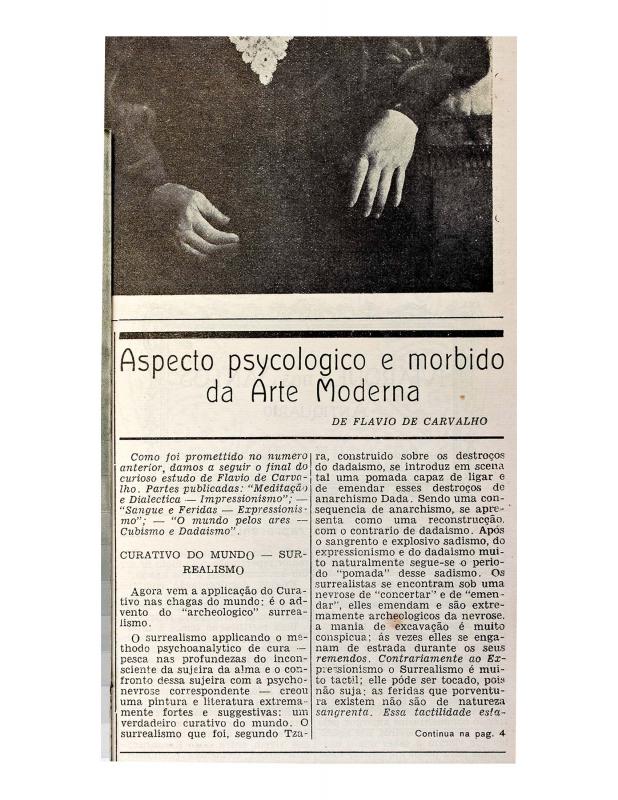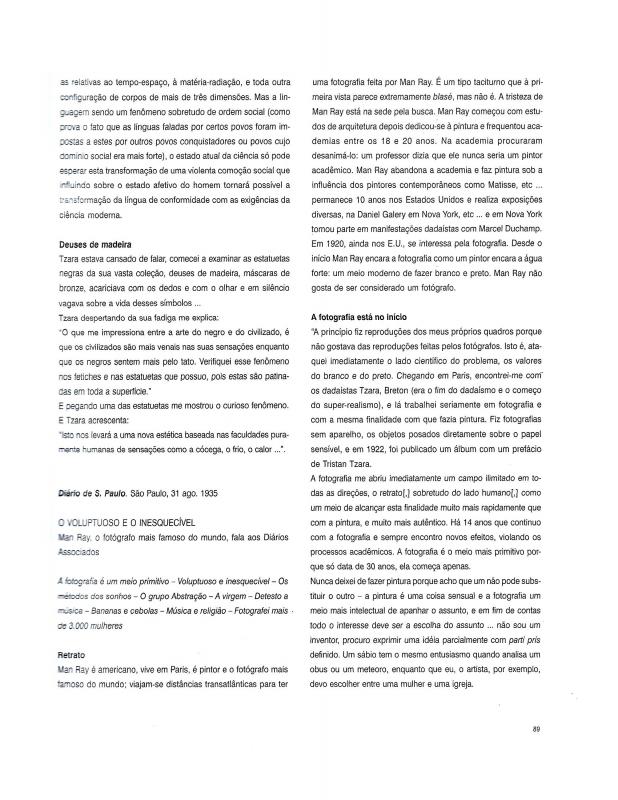Rubem Braga briefly describes the CAM (Club of Modern Artists) program, which includes dances, conferences, and art exhibitions, including an exhibition of drawings and sculpture by children and inmates of the Juquerí psychiatric hospital, located thirty kilometers from São Paulo. In his remarks, Flávio de Carvalho (1899–1973), the president of the club, discusses the Teatro da Experiência, which during it very short existence (1933–34) explored a variety of ways in which to breathe new life into Brazilian theater. There were both amateur and professional actors in the company; in their productions, gesture and wardrobe were considered just as important as dramatic expression; the sets were sculpture made of aluminum and/or solid materials instead of painted panels; a transparent curtain was installed between the proscenium and the stage to allow for more intense lighting effects, etc. According to Flávio de Carvalho, the goal was to present an “Expressionist style of theater” that stressed “thought” over “emotional reaction.”
[As complementary reading, see the following articles by Flávio Carvalho in the ICAA digital archive: “Aspecto psychologico e morbido da arte moderna [1]” (doc. no. 1110997) and “(…) [2]” (doc. no. 1110998); “A epopéia do teatro da experiencia e o bailado do deus morto” (doc. no. 780339); “Recordação do Clube dos Artistas Modernos” (doc. no. 781340); “O voluptuoso e o inesquecível” (doc. no. 1110392); “A única arte que presta é a arte anormal” (doc. no. 1084943); and “Uma tese curiosa: a cidade do homem nu” (doc. no. 783858). See also the essay by Gilberto Freyre “Recordando Flávio de Carvalho” (doc. no. 1110809); and the lecture that Siqueiros gave at the CAM “Um authentico revolucionario da pintura” (doc. no. 777225)].









